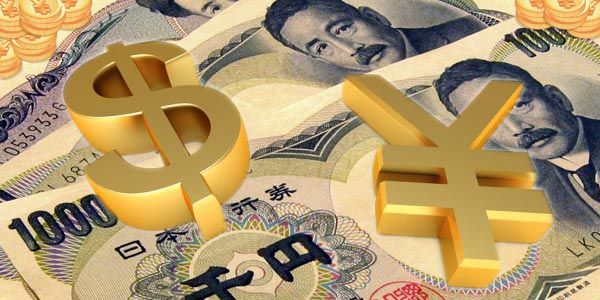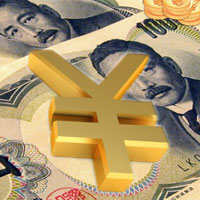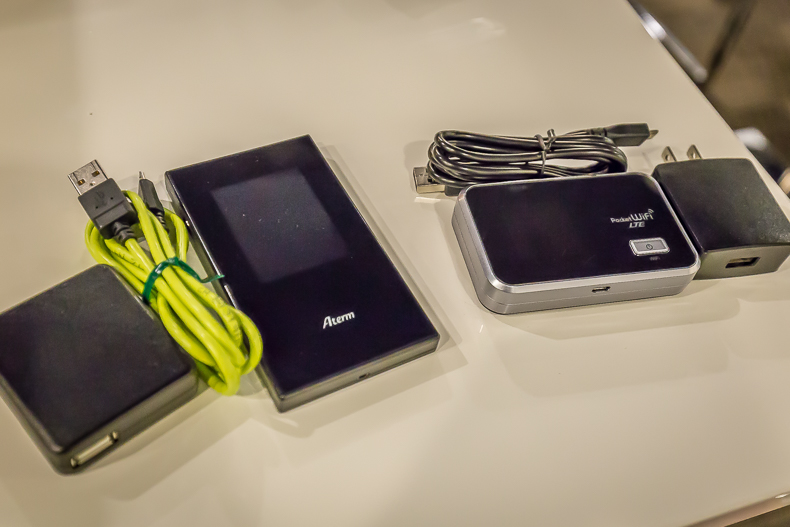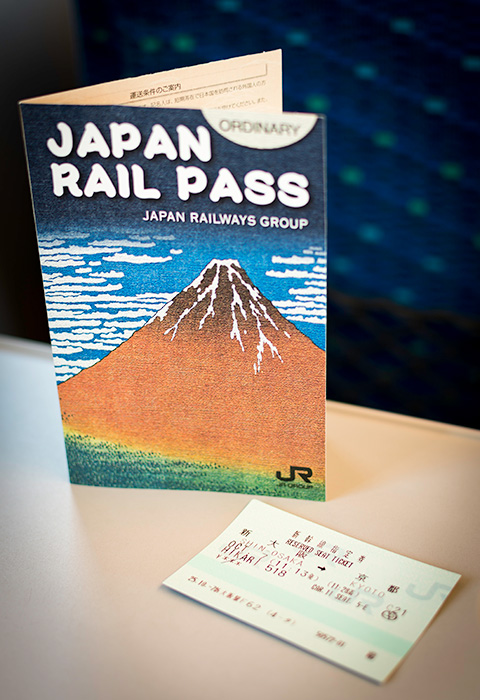At the time of writing this post, the live exchange rate on xe.com for AUD to JPY exchange was taken at close on 22 February 2011. The rate was 1 AUD = 82.79 JPY . For this research, I am trying to find the best deal to exchange AU$1000. I want to find the best exchange rate AUD to YEN.
Except for using the International ATMs to withdrawl money in Japan (as I found these have very good rates), I don’t talk about exchanging your foreign currency for Yen in Japan. I found these to be some of the worst rates, for the Australian dollar anyway.
AUD to JPY chart
You can see the AUD/JPY chart from XE.com. If you have time, keep an eye on this for the best time to buy Japanese yen.

Pre-purchasing currency online
Travellers’ Cheques from Travelex Australia was the first thing I found on the hunt for buying travellers’ cheques. Using the link above to their site, you can purchase foreign currency cash online, and then pick it up at a Travelex store (or agent, as places like HSBC banks, international airport terminals and travel agents will have a Travelex facility). The rate was 1 AUD = 78.80 JPY.
Here I can buy 79,000 JPY for 1002.54 AUD. Pretty low for AUD to JPY, the second lowest in my research here.
Currency from HSBC Australia’s Get Rate (or telegraphic transfer)
My local bank is HSBC Australia, although not quite the “world’s local bank” that I would have liked (just one ATM in Japan, and that is in Tokyo of course). The rates have always looked OK. They recently introduced Get Rate through Internet banking.
Get Rate seems very easy to use (I logged in to Internet banking and tried it). However the restriction is, this is a telegraphic transfer, so you need a Japanese account to send it to.
Here, you can buy 81,699 JPY for 1020 AUD (includes $20 telegraphic transaction fee)
You can preview what the AUD to JPY exchange will be, and from 8am – 10:30am winter time/11:30am summer time you get the live rate. If you click accept after that, you will get the opening rate of the next day.
I asked about getting cash from the bank, and they directed me to Travelex (above).
Cash or Travellers’ Cheques from other local Australian banks
Westpac has an online service that buys direct from American Express.
You can pre-purchase currency or Travellers’ Cheques at the rate of 79.13 JPY for 1 AUD. You would get 80,000 JPY for $1,014.99 AUD (includes a $4 service fee).
Commbank, using the same online service as Westpac, just re-branded has a lower rate.
Buying cash, you would 78,000 JPY for $1,012.08 (including a $10.02 fee).
Buying Travellers’ Cheques, you’d get 80,000 JPY for 1,019.30 AUD (including a $12 fee).
The rate was 77.84 JPY = 1 AUD.
International ATMs in Japan (Seven Bank ATM and Japan Post Bank), taking your card overseas
One of the easiest things to do is use your normal ATM card at the International ATMs provided by Seven Bank at 7-Eleven convenience stores in Japan, or the International ATMs at Japan Post.
I like to use the Seven Bank ATMs. They don’t charge a fee (but note that your bank might). The rates are always said to be pretty competitive (I am still trying to find exact information on this). Here are the fees for two of my account:
- I prefer to use my ING Everyday debit card as they charge me only a $2.50 AUD fee per transaction with no foreign currency transaction charge.
- With HSBC I would be charged $4.50 + 2% for foreign currency transaction charge, so I don’t use this one.
Seven Bank’s accepted cards and service time. They also have an ATM locator in English.
Japan Post Bank’s accepted cards and service time. Japan Post Bank has a fee of 105 JPY per transaction on most days, 210 JPY per transaction on Sundays and public holidays.
If you are planning on using the International ATMs, I strongly recommend:
- Withdrawing large sums of cash from the ATM, around 50,000 JPY. This means you will get hit less regularly with the fees.
- Notifying your bank that you are travelling overseas, because sometimes they will freeze access to an account if overseas transactions are being made on your card (to prevent fraud).
How to use a Seven Bank (7-Eleven or 7-11) International ATM in Japan and its restrictions
The great thing is, it’s all in English. See the How to use a Seven Bank International ATM page at the Seven Bank website.
Restrictions:
- Only 10,000 JPY notes are dispensed and you can get a maximum of 50 notes in one transaction.
- There are times when the ATM will be down or out of service. See the link about service times above. Generally they go offline for 15 minutes around midnight, it varies depending on the card.
See the results of an experiment I carried out in Japan, using 7-Eleven’s Japanese International ATMs to find what rate you will actually receive.
Currency from an agent, walking into the store
Haven’t tried this, next time I am in Sydney, I will. I hear that KVB Kunlun in Sydney (See KVB Kunlun’s Google Maps Place page) have good rates.
Every person I ask, Japanese and the regular traveller to Japan has recommended going to KVB Kunlun as they consistently have the best rate.
Update (16 May 2011): Before I left Australia for Japan this year, on March 24, I went to KVB Kunlun and exchanged some cash. Only today did I find the Confirmation of Foreign Exchange Transaction, given upon receipt of exchange.
Results of exchange currency at KVB Kunlun in Sydney:
- Exchange rate for the day closed at 1 AUD = 81.98 JPY.
- The rate given by KVB Kunlun was 1 AUD = 80.62. A very good margin indeed!
- I paid $2704.05 AUD in exchange for 218,000 JPY
This was easily the best margin in Sydney, as I had spent a few hours over two days looking at various banks and currency exchange places. It isn’t as good as the exchange rate given at 7-Eleven Japan International ATMs, but it is a good idea to take some currency with you to Japan.
Conclusion: best way to exchange AUD to JPY
Well after considering the research above, the telegraphic transfer is not justified, the $20 transfer fee is just too much, even if you do get a decent rate. It might be a good option if you have a Japanese bank account already or know someone who does, and can withdrawl the money when you are in Japan.
Also the Travellers’ Cheques are usually the worst rate, so I put them to the side also. You would use this if you are very worried about the safety of having cash.
The exchange rate for foreign cash (i.e. changing foreign notes at a bank or Japan Post) in Japan is usually very poor, perhaps even worst than Travellers’ Cheques.
For the average traveller who might be taking a few thousand dollars to Japan, I’d recommend (having done this before) that the best thing to do is:
- Change half your spending money in an AUD to JPY exchange by buying Japanese Yen notes in Australia by walking into a money exchange agent (KVB Kunlun in Sydney is one of the best).
- The other half of your AUD to JPY, put into whatever account you will be accessing at the International ATMs. If you are worried you might lose your card, then either take 2 cards from the same account (request an additional from your bank) or have different cards from multiple accounts which you can quickly netbank and swap money between accounts.
What do you think is the best way to exchange AUD to JPY?
How do you prefer to exchange dollars to Japanese Yen? We’d like to hear from you even if you are from countries other than Australia, especially if you have information on exchanging currency in Japan that will get you a better rate that the ones above.





Some great research there and a large variety of methods to make a currency exchange. XE.com is a great website to use to keep track of the AUD and to when to buy Yen.
Good research skills there.
Based on my personal experiences, I would recommend Aussie travellers to buy currency online through Travelex.com and pick up their money via the selected branch before flying over. Otherwise take a ING Everyday Debit card and withdraw money at 7/11 or any other international ATM.
When I went to Japan in 2010 XE.com listed $1AUD = $83-85yen. When i ordered currency online via Travelex.com I got approx $81yen for every dollar. When I arrived in Japan, the $AUD had depreciated down to approx $80-81yen. I went into a currency exchange place in Shibuya and they offered me $70-72yen. When I exchanged money at one of the post offices in Nagano, I got rates of $70yen. Now, I’m not sure if I got charged lower rates at Nagano because it’s a touristy place and slightly remote compared to Tokyo but it was dearer. My friend withdrew money from a ATM with his ING card and got charged $2.5AUD from ING atm fee but no conversion fee, which was pretty dam good. Hope my suggestion has helped.
I’m from Europe. Especially since the earthquake and the rising insecurity about the power plant, the Yen has become increasingly expensive! Terrible!
Things are starting to change, the JPY lost value against the AUD. The rate was up 2.5c overnight to 1 AUD = 80.61 JPY.
I agree, based on my experience on trips to Tokyo it is better to be prepared with half the required Yen. But on the comment on wire fees and transfers, I do not because if you have a Japanese account you can use online FX brokers to get better than bank rates with free outgoing wire transfers. I have used this internationally for Canada, USA, Australia, Sweden, and Japan.
I have had great fast service with Currency Online: https://secure.currencyonline.com/ef/1324/secure/register/trading
Hi Ray and thanks for reading/commenting.
I think it’s safe to say that most travellers won’t have a Japanese bank account to transfer funds to.
Additionally I’d like to highlight to my readers that Ray’s author URL (you can see it by hovering over his name above) links to an online currency service, so I’m assuming he is a representative of that business and hence in commenting, actually only trying to build links to his website and not actually provide any real value to this conversation.
I’m doing is using my Citibank Plus account at the 7-11 ATMs and Citibank ATMs. Citibank charges absolutely ZERO fees for using your card overseas. Not even the normal percentage charged for currency exchange. And the rates applied are visas market rates. Basically, with a Citibank Australia Plus account I am getting almost exactly the market rate with ZERO fees.